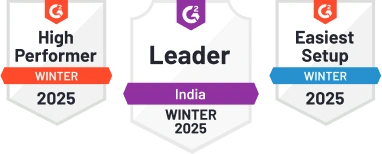Key Responsibility Areas (KRA) & Key Performance Indicators (KPI) for Senior Admin Manager
1. Operational Efficiency
KRA: Ensure smooth and efficient daily operations of administrative tasks to support organizational functions.
Short Description: Streamline administrative processes for optimal performance.
- Percentage of tasks completed within set deadlines
- Reduction in administrative errors by X%
- Improvement in response time to internal queries
- Enhancement in process efficiency by implementing X new tools
2. Budget Management
KRA: Oversee budget planning and expenditure control for administrative operations.
Short Description: Manage and optimize budget allocation for administrative needs.
- Variance between actual and projected administrative costs
- Cost-saving initiatives implemented and resulting savings
- Percentage of budget utilized for key projects
- ROI on administrative expenditure
3. Team Development
KRA: Lead and mentor the administrative team to enhance skills and performance.
Short Description: Foster a culture of growth and development within the administrative team.
- Employee satisfaction and engagement levels
- Training hours per employee per quarter
- Reduction in staff turnover rate
- Number of team members promoted or upskilled
4. Policy Compliance
KRA: Ensure adherence to company policies and regulatory requirements in administrative processes.
Short Description: Uphold organizational standards and legal compliance in all administrative activities.
- Number of policy violations reported
- Completion rate of mandatory compliance training
- Audit results on policy adherence
- Number of compliance issues resolved within stipulated time
5. Technology Integration
KRA: Identify and implement technology solutions to enhance administrative efficiency and effectiveness.
Short Description: Leverage technology for streamlined administrative processes.
- Integration of X new software/tools for admin tasks
- User satisfaction with implemented technology solutions
- Reduction in manual data entry tasks by X%
- IT support response time for administrative systems
6. Stakeholder Communication
KRA: Facilitate effective communication between administrative functions and internal/external stakeholders.
Short Description: Ensure seamless information flow within and outside the administrative domain.
- Feedback rating on communication effectiveness
- Number of successful stakeholder collaborations initiated
- Response time to stakeholder queries and requests
- Completion rate of communication action plans
7. Risk Management
KRA: Identify potential risks to administrative operations and implement mitigation strategies.
Short Description: Proactively manage and reduce risks that could impact administrative functions.
- Number of risk assessments conducted annually
- Incident response time for identified risks
- Percentage reduction in identified risks over time
- Effectiveness of risk mitigation measures implemented
8. Performance Metrics Analysis
KRA: Analyze key performance metrics to evaluate the effectiveness of administrative processes.
Short Description: Utilize data-driven insights to enhance administrative performance.
- Accuracy of data reports generated for performance analysis
- Identification of key performance trends and patterns
- Improvement in key metrics such as cost per task, efficiency ratios, etc.
- Implementation of performance improvement initiatives based on analysis
9. Continuous Improvement Initiatives
KRA: Drive continuous improvement programs to enhance administrative processes and efficiency.
Short Description: Foster a culture of innovation and ongoing enhancement in administrative functions.
- Number of improvement projects initiated and completed
- Employee suggestions implemented for process enhancement
- Reduction in turnaround time for key administrative tasks
- Feedback on improvement initiatives from stakeholders
10. Quality Assurance
KRA: Establish and maintain quality standards for all administrative deliverables and services.
Short Description: Ensure consistent quality in administrative outputs and services.
- Number of quality audits conducted and results
- Customer satisfaction ratings on administrative services
- Percentage of errors detected and rectified in deliverables
- Compliance with quality benchmarks and industry standards
Real-Time Example of KRA & KPI
Example: Operational Efficiency
KRA: By optimizing task management software, the Senior Admin Manager improved task completion rates, reduced errors by 15%, decreased response time by 20%, and enhanced process efficiency by introducing new automation tools.
- KPI 1: Percentage of tasks completed within set deadlines
- KPI 2: Reduction in administrative errors by X%
- KPI 3: Improvement in response time to internal queries
- KPI 4: Enhancement in process efficiency by implementing X new tools
These KPIs led to a 25% increase in overall operational efficiency and a 30% reduction in operational costs, showcasing tangible improvements in performance and success.
Key Takeaways
- KRA defines what needs to be done, whereas KPI measures how well it is done.
- KPIs should always be SMART (Specific, Measurable, Achievable, Relevant, Time-bound).
- Regular tracking and adjustments ensure success in Senior Admin Manager.







